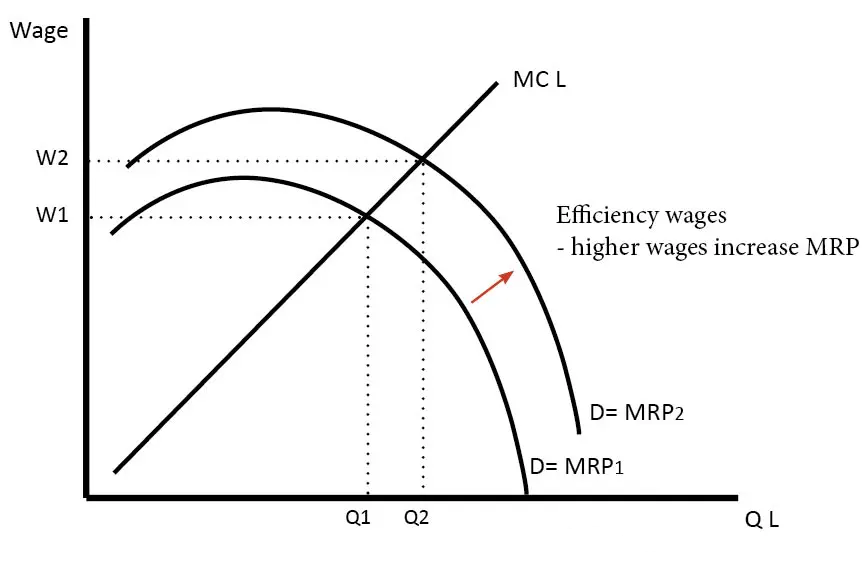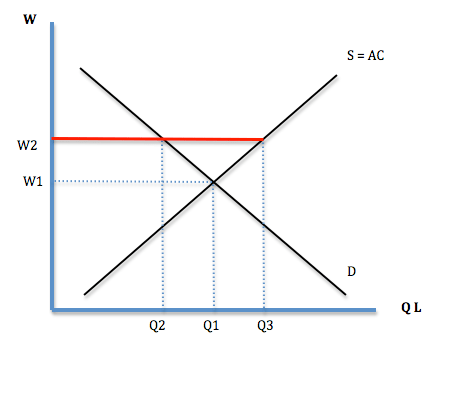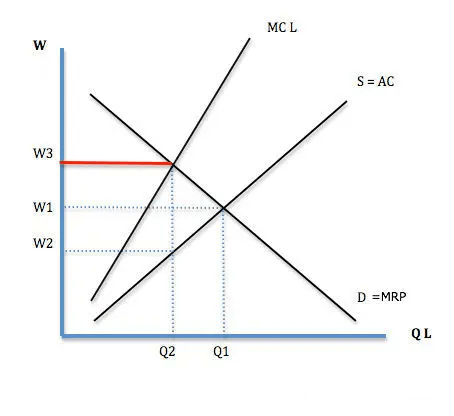The term ‘compensation’ refers to all forms of financial returns and tangible benefits that employees receive as part of the employment relationship.
In the era of globalization, where the business environment has become increasingly complex and challenging, structuring an effective compensation package to attract and retain talent is an important function of organizational effectiveness.
Compensation may achieve several purposes assisting in recruitment, job performance, and job satisfaction.
In other words we can say that Compensation is the process of providing adequate, equitable and fair remuneration to the employees.
Compensation can be classified into two categories:
- Financial Compensation
- Non-Financial Compensation
-
Financial Compensation
Financial compensation is most popular and important compensation that is given in the form of money. It is the most important motivational factor that satisfies employees’ basic needs like food, clothing, etc.
It is further categorized into two parts:
- Direct Compensation
Direct compensation means compensating employees by paying them money in the following forms:
- Wages: Wages means remuneration paid in cash for the work performed by an employee.
- Bonus: Bonus means extra cash paid to an employee for exceeding his performance or on completion of specified project or target.
Other financial incentives that are directly given to employees in the form of cash.
- Indirect Compensation (Fringe Benefits)
Indirect compensation as the indirect financial and non- financial payments employees receive for continuing their employment with the company which are an important part of every employee’s compensation. Other terms such as fringe benefits, employee services, supplementary compensation and supplementary pay are used.
Armstrong says indirect compensation or employee benefits are elements of remuneration given in addition to the various forms of cash pay. They also include items that are not strictly remuneration such as annual holidays.
Management uses it ostensibly to facilitate its recruitment effort or influence the potential of employees coming to work for a company, influence their stay or create greater commitment, raise morale, reduce absenteeism in general and improve the strength of the organization by instituting a comprehensive programme in this area.
According to Chhabra, indirect or supplementary compensation involves ‘fringe benefits’ offered through several employee services and benefits such as housing, subsidized food, medical aid, creches and so on. It involves rewards provided by organizations to employees for their membership, attendance or participation in the organization.
Because of the increasing costs of fringe benefits, some people also label them as ‘hidden payroll.’ Benefits currently account for almost 40 per cent of the total compensation costs for each employee. The basic purpose of fringe benefits or supplementary compensation is to attract and maintain efficient human resources within the organization and to motivate them.
Types of Indirect Compensation
Below are some of the more popular indirect compensations offered by today’s organizations
(i) Social Security
This is a federally administered insurance system. According to law, both employer and employee must pay into the system, and a certain percentage of the employee’s salary is paid up to a maximum limit. How much is paid by employer and employee is calculated on the average monthly wage (weighted towards the later years). It is provided mainly to give financial security to employees when they retire.
(ii) Workers’ Compensation
It is meant to protect employees from loss of income and to cover extra expenses associated with job-related injuries or illness. The laws generally provide for replacement of lost income, medical expenses, rehabilitation of some sort of death benefits to survivors, and lump-sum disability payments.
(iii) Retirement Plans
Retirement and pension plans, which provide a source of income to people who have retired, represent money paid for past services. Private plans can be funded entirely by the organization or jointly by the organization and the employee during the time of employment.
One popular form of pension plan is the defined-benefit plan. Under this plan, the employer pledges to provide a benefit determined by a definite formula at the employee’s retirement date. The other major type of retirement plan is the defined contribution plan, which calls for a fixed or known annual contribution instead of a known benefit.
(iv) Paid Holidays
These comprise Christmas Day, New Year’s Day, Independence Day, Labour Day, etc. One relatively new concept is the floating holiday, which is observed at the discretion of the employee or the employer.
Another relatively new concept is referred to as personal time-off or personal days. Under this concept, organizations give employees a certain number of days with pay to attend to personal affairs. Normally these days can be taken at the employee’s discretion.
(v) Paid Vacations
Typically, an employee must meet a certain length-of-service requirement before becoming eligible for paid vacation. The time allowed for paid vacations generally depends on the employee’s length of service.
Unlike holiday policies that usually affect everyone in the same manner, vacation policies may differ among categories of employees. Most organizations allow employees to take vacation by the day or week but not in units of less than a day.
(vi) Other Benefits
Organizations may offer a wide range of additional benefits, including food services, exercise facilities, health and first-aid services, financial and legal advice, and purchase discounts. The extent and attractiveness of these benefits vary considerably among organizations. For example, purchase discounts would be especially attractive to employees of retail store or an airline.
-
Non-Financial Compensation
Non-financial compensation refers to compensating employee not in form of money but in some other forms that stimulate employees’ morale and also improve his performance.
It can be in the following forms:
- Job security
- Recognition
- Participation
- Pride in job
- Delegation of responsibility
- Other incentives
Types of Compensation: Prevalent in the Indian Industries
The basic types of compensation prevalent particularly in the Indian industries are:
- Basic pay
- Dearness or cost of living allowance
- Incentive payments
- Performance-based remuneration
- Bonus
- Fringe benefits and miscellaneous cash allowances.
- Basic Pay
Basic pay universally constitutes the most important component of compensation. However, there are variations in the manner in which basic pay is determined and paid. It may be on daily, weekly or monthly basis. In India, under the Minimum Wages Act, 1948, both the central and state governments have fixed minimum daily rates of wages for a large number of sweated employments.
In the U.S.A., U. K. and France, there has been the practice of fixing hourly rates of wages for several categories of workers. In the organised sectors in India, the practice of prescribing monthly basic rates of wages under wage scales with provision of annual increments is widely prevalent.
Basic wages are significant for workers for a variety of reasons. Generally speaking, most other cash allowances made available to workers, such as dearness allowance, house rent allowance, city compensatory allowance, medical allowance and so on, are linked with the quantum of basic wages. Besides, contributions to social security funds such as provident and pension funds, gratuity and certain cash allowances are often linked to basic wages.
The quantum of basic pay is also taken into account in determining the scales of certain fringe benefits, such as housing accommodation, and travelling and leave travel allowances. Overtime payments for additional hours worked are also usually based on basic pay.
- Dearness or Cost of Living Allowance
Dearness allowance or cost of living allowance, separate and distinct from basic pay, has been an important component of compensation in industrial and governmental employments in India and a number of Asian countries. The basic purpose behind the provision of dearness allowance is to offset the rise in prices of consumption goods and to protect the real wages from being encroached by price rise.
Starting during the Second World War period on a temporary and experimental basis, the system has become a permanent feature of the wage structure in Indian industries and governmental and semi-governmental employments.
In general, the quantum of dearness allowance payable to industrial workers as well as government and semi-government employees is linked with the fluctuations in the Consumer Price Index Numbers for industrial workers worked out by Labour Bureau, Ministry of Labour, and Government of India, which has been engaged in the task since 1946.
The specific schemes for the determination of D.A. have considerably varied from time to time. In its earliest form, flat rates on a graduated basis without any linkage to CPI numbers were prevalent. Subsequently, calculation of D.A. came to be made with reference to rise or fall in the CPI numbers calculated by either the central or state governments.
Initially, the percentage of neutralisation for the rise in prices was higher in low wage brackets tapering off gradually when wages rose. Later, a more or less consistent formula providing for neutralisation for rise in prices on a common percentage basis emerged for government and semi-government employees. However, the industrial establishments have their own separate schemes generally worked out on the basis of negotiations.
In many countries such as the U.S.A. and Australia, there are schemes of automatic revision of basic rates of pay when prices rise above the specified level. Many collective agreements in the U.S.A. contain escalator clauses to avoid frequent bargaining for revision of wage rates.
- Incentive Payments
In a number of industrial undertakings, employees are in receipt of incentive payments. These incentive schemes are generally directly related to the quantum, and in some cases, to the quality of goods produced by individual employees or a group of them. The specific schemes vary from organization to organization, and with different sets of employees in the same organization.
There are schemes, such as the straight piece-rate system, in which the earnings of employees vary in the same proportion as increase in output. In many schemes, incentive payments are lower than the proportion of increase in output. There are also schemes in which incentive payments are higher in proportion to the increase in output. In a number of schemes, incentive payments vary in different proportions at different levels of output. Performance based remuneration described below may also be considered incentive payment.
- Performance Based Remuneration
During more recent years, especially after the onset of globalization and competition, many categories of employees, particularly managerial and supervisory personnel, have been receiving performance based remuneration.
Such a remuneration is worked out on the basis of the outcome of performance appraisal of individual employees, which takes into account the level of their performance in such areas as extent of improvement in the quantity and quality of products or services, acquisition of skills and capabilities, regularity of attendance, relationship with co-employees, capacity to face challenging situations and extent of commitment to work.
The specific schemes of performance appraisal vary from organization to organization and different sets of personnel in the same organization. Based on performance appraisals, individual employees are allotted specific grades, and are remunerated and given inducements based on their performance. Performance appraisal also constitutes key to decisions in other areas of HRM such as promotion, transfer, demotion and even separation.
- Bonus
Employees in a large number of industrial establishments in India have been in receipt of profit- sharing bonus. Initially, the practice of giving bonus to industrial workers started on an ad hoc basis primarily at the discretion of employers. However, during the course of time, it became a major bone of contention between employers and workmen, often resulting in industrial unrest and work stoppages.
Many disputes on the question of bonus came up for decision by industrial tribunals and even Supreme Court. In view of the mounting and regular unrest over the question, the Payment of Bonus Act was enacted in 1965. The Act specifies in some detail the formula for the calculation of bonus, and prescribes both the minimum and maximum bonus payable to specified categories of workers.
- Fringe Benefits and Miscellaneous Cash Allowances
Apart from wages and salaries, incentive payments, dearness allowance and bonuses, employees are often in receipt of several types of indirect compensation or fringe benefits, both in cash and kind.
These include housing facilities and house rent allowance, city compensatory allowance, leave-travel facilities, medical facilities and allowances, educational facilities and allowances for the children of employees, social security benefits such as sickness benefit, provident fund, gratuity and pension, concessional availability of electricity and food-grains, transport facilities, supply of uniforms and so on.
The nature and scale of fringe benefits vary widely from organization to organization. To the employer, they are a part of labour cost. In many organizations, they constitute a substantial portion of labour cost, surpassing even the wage bill.
Many of these fringe benefits are made available to employees voluntarily by the employers; many have been the outcome of collective agreements and many others have been statutorily imposed. Many employers, owning large-scale industrial establishments and also those having their establishments in remote and isolated areas, provide housing accommodation to their employees and have also established well-equipped hospitals and dispensaries.
Gary Dessler and Biju Varkkey have preferred to keep various forms of compensation into two main categories direct financial payments such as wages, salaries, incentives, commission and bonuses, and indirect financial payments such as employer-paid insurance and leave travel concessions. Joseph J. Martocchio has classified seven types of monetary or core compensation in the context of practices in the U.S.A.
These are as follows hourly pay, annual salary, cost of living adjustments, seniority pay, merit pay, incentive pay and person-focused pay, pay-for-knowledge and skill-based pay. Practices in regard to forms of compensation or their combinations vary from organisation to organisation depending on a set of internal and external factors.
Like this:
Like Loading...


